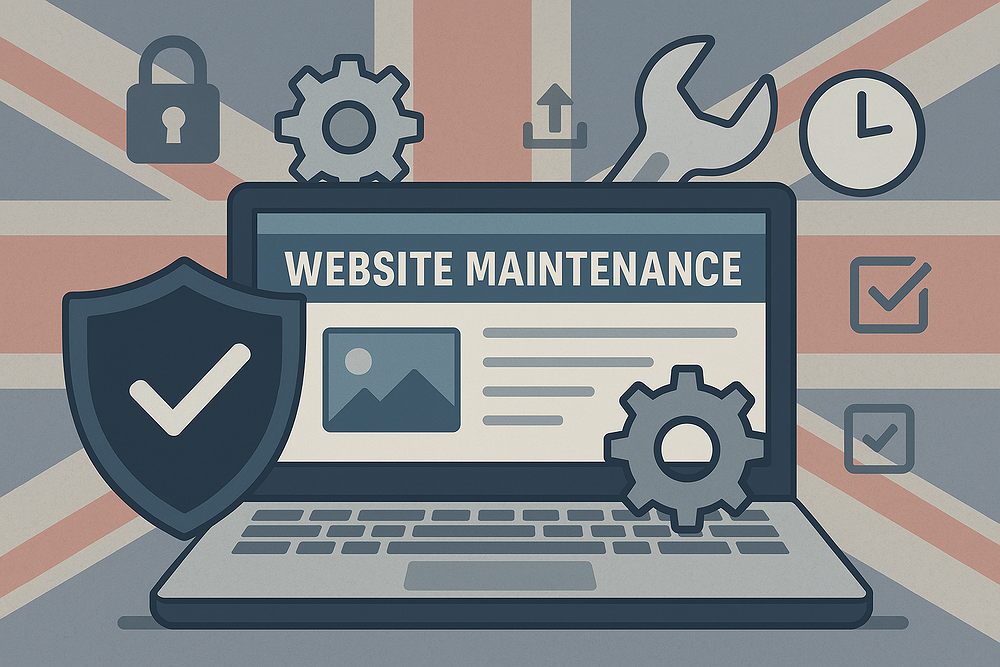From Idea to Launch: Your Guide to Building Effective Web Applications

Launching a new web application is an exciting journey—from the spark of an initial idea to the proud moment you click ‘Publish’. However, the path from idea to launch can seem daunting if you're not from a technical background. In this guide, we'll simplify the process, walking you through each step, and giving you the insights you need to confidently bring your web application to life.
1. Start with a Clear Idea
Every successful web application begins with a clear, well-defined idea. Consider the problem you're trying to solve or the need you're addressing. Ask yourself:
- Who is your target audience?
- What problem will your web app solve for them?
- How will your solution stand out from existing alternatives?
Being clear about your purpose from the start will help you maintain focus throughout the development process.
2. Conduct Market Research
Even the best idea benefits from research. Take time to:
- Understand your competition: Explore similar applications to identify their strengths and weaknesses.
- Identify your unique selling points (USPs): Highlight what will make your application special.
- Validate your idea: Talk to potential users or customers to confirm there's demand.
Doing thorough market research helps prevent costly missteps later in the project.
3. Define Your Web Application’s Scope
Scope creep—the tendency for projects to grow beyond their initial requirements—is a common challenge. Clearly define what your web application will (and won’t) do. Create a simple list of features split into:
- Must-Have Features: Essential for initial launch.
- Nice-to-Have Features: Desirable but not critical.
Keeping your initial launch lean can help you get to market quicker, gather valuable feedback, and manage your budget effectively.
4. Plan Your User Experience (UX)
Your application’s success depends heavily on user experience. Work closely with your development team to create wireframes and mock-ups. These visual tools will help you see how users will interact with your app. Focus on:
- Intuitive navigation
- Simple, uncluttered design
- Clear calls to action (CTAs)
A user-friendly application not only enhances satisfaction but significantly boosts conversions and retention.
5. Choose the Right Technology Stack
Although technical jargon can be overwhelming, understanding the basics helps you make informed decisions. Your development team will help you select the right technology stack—essentially, the software and tools used to build your app. Factors influencing this choice include:
- Budget
- Time to market
- Scalability (ability to grow your application easily)
- Security considerations
Your developers can explain these choices clearly, ensuring the technology aligns with your long-term goals.
6. Development Phase
With the groundwork laid, actual development can begin. Typically, web application development includes two major parts:
- Frontend Development: This is what users see and interact with—the visual elements and user interfaces.
- Backend Development: This powers the frontend, handling data processing, database management, and server interactions.
Throughout development, regular check-ins and demonstrations ensure your application aligns with your vision and allows for timely feedback and adjustments.
7. Testing for Quality Assurance (QA)
Never underestimate the importance of thorough testing. Rigorous testing helps identify and rectify bugs or issues before your users encounter them. Quality Assurance typically includes:
- Functionality Testing: Ensuring everything works as expected.
- Performance Testing: Checking the application’s responsiveness and stability.
- Usability Testing: Confirming that real users can navigate and use the application easily.
Taking QA seriously enhances reliability and prevents potentially damaging issues upon launch.
8. Security Considerations
Security is paramount, especially when handling personal or sensitive data. Even for smaller projects, consider these security essentials:
- SSL Certificates: Encrypt data to keep user information safe.
- Secure Logins and Authentication: Prevent unauthorised access.
- Regular Security Audits: Routinely check for vulnerabilities.
Your users trust you with their data; respecting and protecting that trust builds credibility and reduces risk.
9. Prepare for Launch
As you approach launch day, finalise your hosting choice. Options vary widely based on cost, performance, and scalability. Cloud-based hosting services like Azure or AWS offer scalable and reliable solutions ideal for most web applications.
Additionally, plan your marketing and launch strategy:
- Develop a launch timeline.
- Prepare promotional content and social media campaigns.
- Consider a beta launch to a limited group for final feedback.
10. Launch Your Web Application
The big moment has arrived—it's time to launch! Ensure everything runs smoothly on launch day by having your team available to handle any unexpected issues. Closely monitor user feedback, website analytics, and performance to quickly identify and respond to early-stage challenges.
11. Post-Launch Support and Iteration
Your journey doesn't end at launch. Successful applications evolve with user feedback. Regularly:
- Gather and analyse user feedback.
- Monitor app performance.
- Update and iterate based on insights gathered.
Continued improvements and updates not only retain your users but demonstrate your commitment to quality and customer satisfaction.
12. Building Long-term Success
For lasting success, stay connected with your users. Regular updates, newsletters, blog posts, and social media engagement help maintain interest and loyalty. Foster a community around your application to encourage user participation and advocacy.
Takeaway
Developing and launching a web application doesn't have to be intimidating. With careful planning, clear communication, and the right technical partner, your idea can flourish into a successful digital solution. Stay engaged, adaptable, and proactive, and you'll be well-equipped to navigate the exciting journey from idea to a successful web application launch.
Talk to us about your next project
Our team of experts is ready to help bring your ideas to life with solutions tailored to your business.
Get in Touch

